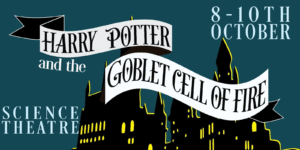
by RACHEL HANLY
This week’s rec: The works of Michelangelo (1504-1552)
Medium: Sculpture and fresco painting

Michelangelo remains one of the most (if not the most) celebrated and widely recognised artists in history. And for good reason: his paintings showcase the human body in fluid, dynamic glory, his sculptures hauntingly alive. The Sistine Chapel remains today a testament to sheer ambition and artistic genius, the sculpture of David arguably the finest example of sculpture to ever exist. And yet, not much is known in pop culture about his ambitions, his thought processes and the reasons behind the artistic choices he made.
Michelangelo’s skill in recreating the human body can be attributed to his extensive study of cadavers in his early apprenticeships, performing his own dissections at the age of eighteen. Later in life, he aimed to produce a medical anatomy text in collaboration with anatomist Realdo Colombo, who also treated him for kidney stones. In fact, Michelangelo’s obsession with anatomy was one that followed him throughout his life and career, reflecting the views regarding Renaissance art at the time, which encouraged artists to research for themselves the complexities of the human body rather than rely on the nudes in previously established art.
Scholars have noticed distinct anatomical symbolism in Michelangelo’s art; you may be familiar with the popular theory of the sagittal cross-section of the brain in The Creation of Adam, but some suggest that he may have explored other, more personal symbols in his art. In the late 1540s, Michelangelo wrote to his nephew, “As far as they can make out, the doctors say I am suffering from the stone. They are still not certain. However, they continue to treat me for the said malady and are very hopeful…”

It is noted that Michelangelo’s friends and family were concerned about his health for a long period of his life, likely due to the suffering he endured from kidney disease, but possibly, some believe, due to some other, mysterious chronic disease. Along with this, Michelangelo suffered from periods of depression and melancholy which may have influenced the portrayal of illness in his art.
This may be why, during the painting of the Sistine Chapel from 1508-1512, we observe some interesting features employed by Michelangelo, one of which (among others) seems to be directly reflective of the circumstances of his life. The Separation of the Land and Water, one of the paintings on creation on the roof of the chapel, features God approaching from a flowing mantle over a body of water, directing the separation of the sea from the earth. Interestingly, scholars have commented that the scene structures itself remarkably similarly to the structure of a kidney, with the Creator emerging from the renal pelvis in a dynamic spiralling movement.
This serves as a captivating portrayal of illness in art, the extent to which sickness and pain can influence one’s psyche. Whether it was a deliberate decision, unconscious choice or simply a strange coincidence we will likely never know. However, it is fascinating now to examine the interplay between medicine and art, and how often they draw influences from each other.
Despite the splendour of his art, it’s captivating to see hints of Michelangelo’s personality come through, a cheekiness that manifests itself in his poetry and sketches. A drawing accompanied by a humorous sonnet depicts him painting God on the ceiling of the Sistine Chapel, under which he erected a small scaffold and craned his neck upwards to paint, showcasing the uncomfortable conditions of the difficult task. It’s easy to forget that he was a real person despite being a genius and historical figure.

Ultimately, Michelangelo’s artistic process was influenced by multitudinous factors; it’s equally as interesting to look into the process behind something so great than to just see it as a finished product. It’s important to realise the impact of illness on a person’s life, and how that translates into what they achieve.
















































































































